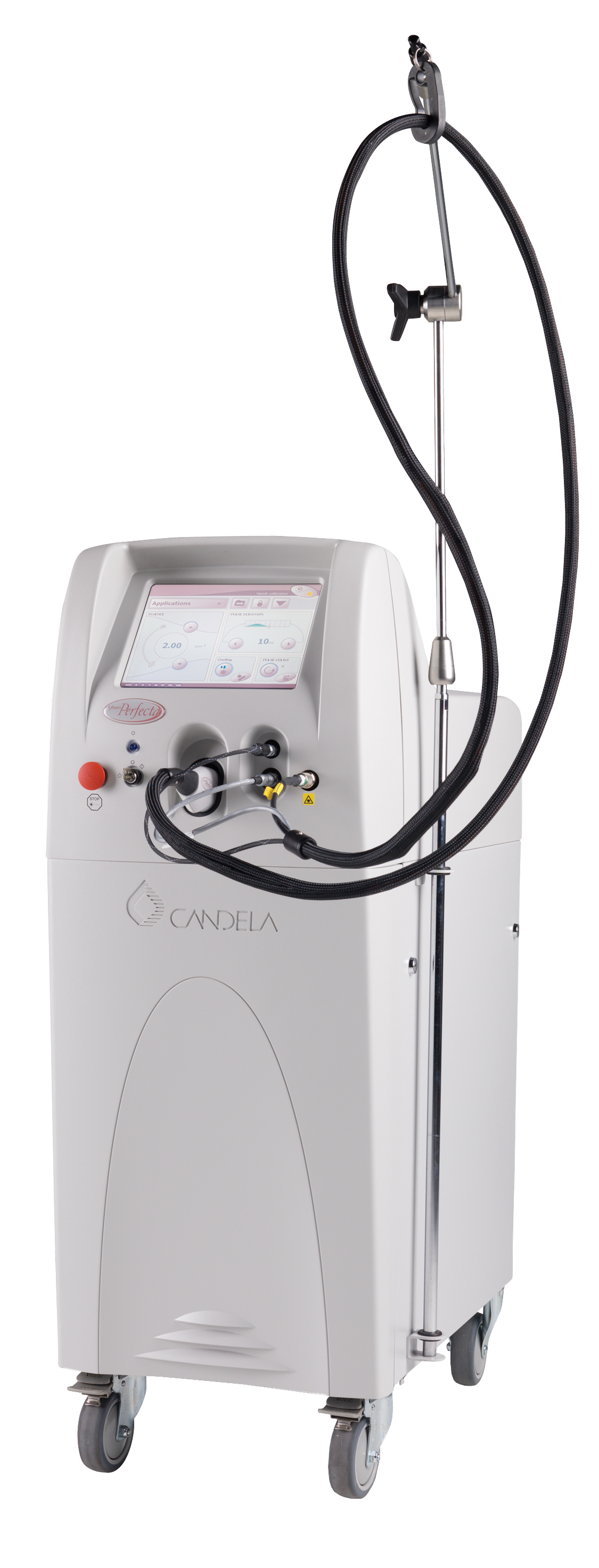%20copy.jpg)
The Vbeam® laser system is a world-renowned, easy-to-use pulsed dye laser recognised as the gold standard technology for the treatment of vascular lesions. The Vbeam pulse dye laser (PDL) has been proven time and again for the successful treatment of a wide array of vascular, pigmented, and certain non-pigmented lesions, with a low incidence of side effects.


The VBeam Laser is a specialized pulsed dye laser (PDL) designed to treat a variety of skin conditions, including vascular lesions, discoloration, and certain pigmentation issues. By operating at a wavelength of 595 nm, it precisely targets blood vessels and pigmented areas to improve skin clarity and tone.
VBeam’s light pulses are absorbed by haemoglobin in red blood cells and melanin, the pigment that gives skin its colour. As the light energy converts to heat, it selectively damages these targeted vessels or pigmented regions while minimizing impact on surrounding tissue. This targeted approach helps enhance precision and reduce potential side effects.

The Vbeam Laser is effective against a wide range of skin conditions.

Vbeam is considered a safe laser therapy, especially for individuals with darker skin tones. Its 595 nm wavelength is highly absorbed by hemoglobin in blood vessels, while minimizing absorption by melanin in the skin’s surface. As a result, Vbeam is more targeted and carries a lower risk of unwanted pigmentation changes. It is particularly effective in treating redness associated with rosacea.
Like any laser procedure, Vbeam does carry some potential risks. These include hyperpigmentation (darkening of the skin), hypopigmentation (lightening of the skin), and bruising. Although scarring is possible, it is quite rare when the treatment is performed under appropriate settings. Your provider will discuss any concerns you may have and help you understand whether Vbeam is the right option for your specific skin concerns.

Vbeam is the gold standard treatment for vascular birthmark such as Port wine stain.

Yes. In addition to treating rosacea and vascular lesions, Vbeam is often used for striae (stretch marks), traumatic scars, hypertrophic/keloid scars, and red acne scars. An international panel of specialists broadly considers Vbeam the top choice for these types of scars and stretch marks due to its targeted approach and proven effectiveness.

Vbeam is generally well-tolerated by most patients. The sensation is often compared to a light rubber band snap, and the laser’s built-in cooling technology—delivered via a brief cryogen spray—helps protect the skin and reduce discomfort. Even when treating larger areas, such as the full face (which may involve 200–300 laser pulses), the procedure usually takes around 15 minutes and is very manageable. Local anaesthesia is typically not required or recommended, as it may affect the treatment’s effectiveness.

Most large cosmetic and laser clinics offer IPL (Intense Pulsed Light) and BBL (Broad-Band Light), but they are not technically lasers. IPL/BBL devices use a broad-spectrum light source, meaning they emit multiple wavelengths at once, making them less precise in targeting specific skin concerns. By comparison, VBeam uses a single wavelength (595 nm) that is specifically absorbed by blood vessels, making it highly effective for treating rosacea and other redness-related conditions. A simple analogy is that IPL/BBL functions like a broad eraser that can affect multiple “colours” in the skin, whereas VBeam targets red specifically.
Because IPL/BBL affects a broad range of skin targets, it can pose a higher risk of complications—especially in darker skin types—and often requires more sessions to achieve desired results. VBeam’s targeted approach usually allows for safer and more efficient treatments, which is why many specialists regard it as the gold standard for vascular issues. Although VBeam is more expensive to purchase and maintain, its efficacy and safety profile make it our preferred choice for patients seeking treatment for rosacea, spider veins, and other vascular-related skin concerns.

Redness in the skin typically results from increased blood flow in surface-level blood vessels. Vbeam targets these vessels by directing laser energy at oxyhaemoglobin (the red pigment in blood), causing the vessel to heat from within and coagulate. As a result, the affected blood vessel shrinks or seals off, rerouting blood flow to deeper vessels. This process effectively diminishes excessive redness on the skin’s surface.
For all appointment enquiries, medical referrals and urgent enquiries please contact us at info@scarsandlasers.co.nz or (09) 524 5011.
